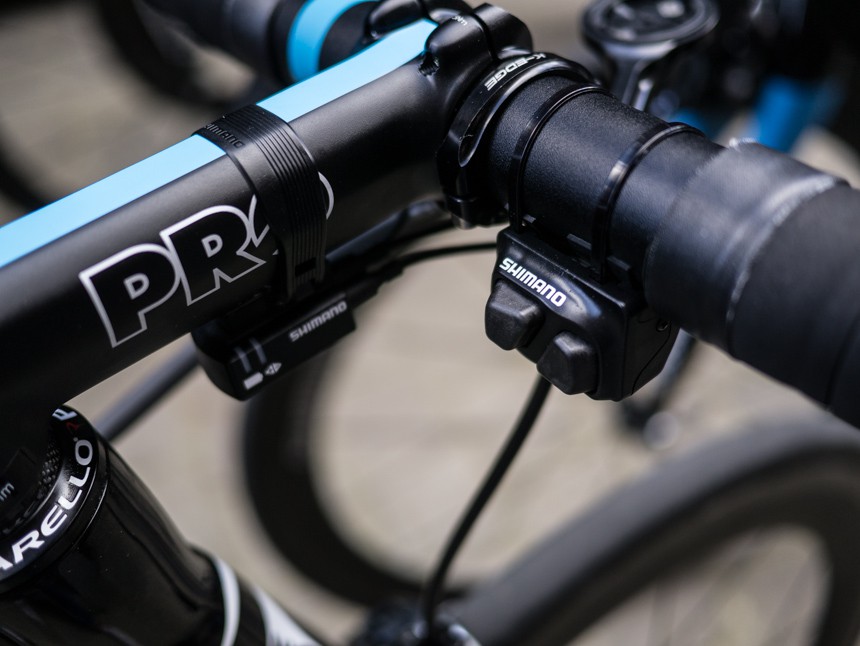It’s Not So New?
Electronic shifting is nothing new. Cyclists began seeing versions of electronic shifting bikes bikes in about 1990 with offerings from Suntour and Mavic — but it’s been sketchy going forward. Other companies also tried it, but most of them failed at commercial applications because of reliability issues — some failed in the rain for example — and were subsequently discontinued.
The Big Three
Bike Electronic Shifting – What Is It And Why Should You Be Interested?
How They Work
Cables Versus Wires
Hidden Wires
Wires can be routed out of the way inside tubes, hidden from sight and exposure. It increases their ability to survive crashes and hard riding and also eliminates the effect of dirt, mud, and other foreign objects that get inside traditional cable housings.
Shifter Variations
Shifters can be placed wherever you want them. The re-location benefit probably pays the most dividends on a road bike where you can position the shifters almost anywhere in the drops, on top of the bars or both. But even just being able to achieve an optimum reach for your thumbs on a mountain bike’s flat bars is beneficial as well.
Fast and Accurate
The biggest benefit is speed and accuracy of shifts. Without having to think about using it, electronic shifting gives you the fastest possible shifts up or down. The system won’t succumb to the shock of impacts or jostling of rough terrain, and that’s a huge advantage in cyclocross. If you’re able to hit the button, it will complete the shift perfectly — every time. There’s no slop or waiting for the chain to crawl onto the big chainring. It just moves to its new position with controlled accuracy.
Safer in Packs and Pacelines
You can get dual shift buttons in your drops or on the hoods — it’s a huge safety advantage of electronic shifting. You never need to remove a hand to execute a shift. This is extremely valuable when in a tight pack situation or paceline where even the slightest wobble can take out the whole group.
Faster Rides Overall
Electronic shifting should make you faster. The more hilly and curvy, the more the advantage. You brain is wired directly into your drivetrain. You don’t even think about shifting and might not even remember that you shifted the bike. Your thumbs just seem to shift automatically. It just happens. You shift far more often and more efficiently using both chainrings because it is so easy and automatic. You should never get bogged down in a corner because you’re in a big gear and can’t reach to shift while trying to accelerate.
The Double Shift
The double shift. With electronic shifting you really can wait until the last second and you can and will double shift – drop to the small ring while simultaneously shifting down two cogs in the back. We all do it.
The Battery
1,000 Mile Range
Maintenance Issues
Electronic shifter maintenance — not so much. Any real issues with your components typically require them to be serviced by a trained technician which is probably good since not too many cyclists have the engineering expertise to figure out what’s wrong, or even know where to begin to fix it. Most fixes require connecting the bike to a computer to diagnosis and/or update the software. (You never thought you would hear those words did you?)
Don’t Rule Out Mechanical
The innovation of bike electronic shifting shouldn’t automatically be the death of mechanical shifters. Some of the best mechanical systems are beginning to approach the performance of electronic so mechanical shifters aren’t going anywhere. But there’s no reason why mechanical and electrical systems can’t share the road together and that’s probably the way it’s headed. Electric brakes? Probably not. They’re going to hydraulic disc.
